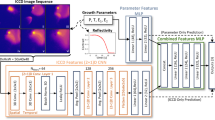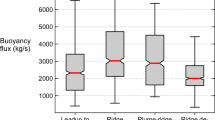Abstract
As part of a comprehensive investigation of the dispersion of chimney gases from a power station, we have been much concerned with studying the behaviour of the buoyant plume during its initial rise. In order to understand its behaviour it is also desirable to have some knowledge of the atmospheric thermal structure. Since plumes from modern power stations are commonly too tenuous for optical observation and rise to heights above the range of convenient surface-based temperature sounding techniques, it has been necessary to develop new techniques. Collis et al.1,2 have already pointed out the value of the pulsed ruby laser rangefinder for studying the atmospheric aerosol.
This is a preview of subscription content, access via your institution
Access options
Subscribe to this journal
Receive 51 print issues and online access
$199.00 per year
only $3.90 per issue
Buy this article
- Purchase on SpringerLink
- Instant access to full article PDF
Prices may be subject to local taxes which are calculated during checkout
Similar content being viewed by others
References
Collis, R. T. H., and Ligda, M. G. H., Nature, 203, 508 (1964).
Collis, R. T. H., Fernald, F. C., and Ligda, M. G. H., Nature, 203, 1274 (1964).
Author information
Authors and Affiliations
Rights and permissions
About this article
Cite this article
HAMILTON, P., JAMES, K. & MOORE, D. Observations of Power Station Plumes using a Pulsed Ruby Laser Rangefinder. Nature 210, 723–724 (1966). https://doi.org/10.1038/210723b0
Issue date:
DOI: https://doi.org/10.1038/210723b0



